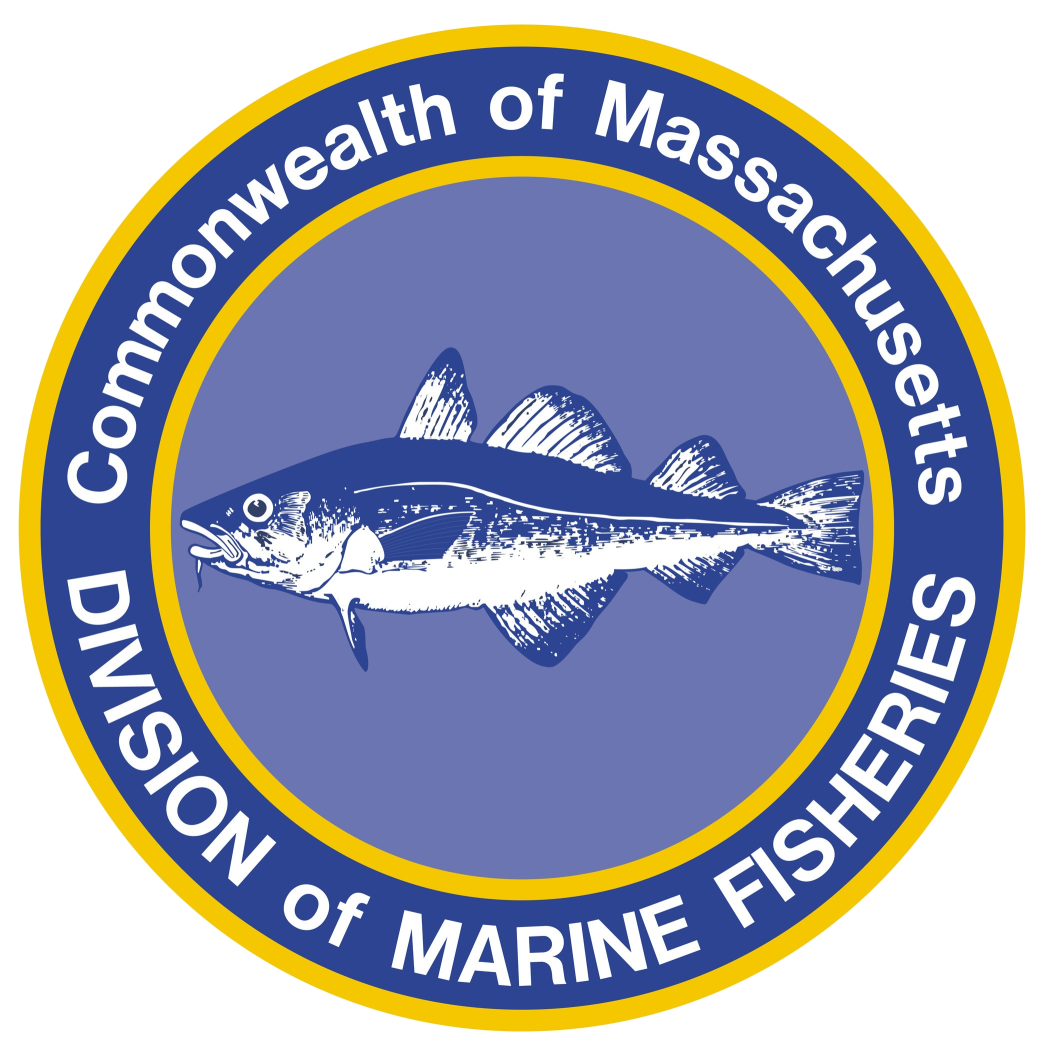- Division of Marine Fisheries
Description
The diadromous American shad is one of the largest members of the herring family, Clupeidae. Diadromous fish are those that migrate between fresh and salt waters to complete their reproductive life history. This sea-run lifestyle is not all that common and found in less than 1% of the fish on the planet. American shad are anadromous meaning they spend most of their lives in the ocean and return to freshwater to spawn. Shad are closely related to river herring and look similar, with the exceptions of a series of dark spots on their side and a larger size. Shad can routinely reach a weight of 4-8 pounds and 2 feet in length with larger individuals possible.
Distribution and Habitat
American shad were formerly abundant on the Atlantic coast with spawning runs occurring in most moderate or larger size rivers over the extensive range from Florida to the Canadian Maritimes. In Massachusetts, shad spawning runs occur in two large rivers bordering several states and seven smaller sized coastal rivers. The Connecticut River and Merrimack River have relatively large runs of shad that support recreational fisheries and are managed by multi-jurisdiction management plans. The other coastal rivers with known spawning runs are: Palmer River, Taunton River, Jones River, the Indian Head and South rivers in the North River watershed, Neponset River, and Charles River. If able, shad will migrate well upstream of tidal waters to spawn in swift (0.3 to 0.9 m/s), shallow runs.
Management
American shad historically supported some of the largest fisheries on the east coast. Shad have been particularly vulnerable to passage obstructions, habitat degradation by coastal development, and overfishing. Commercial shad landings have declined sharply from approximately 50 million pounds on the Atlantic coast at the start of the 20th century, to 6-10 million pounds in the 1950s and 1960s, to less than a million pounds during the last 15 years. The coast-wide population of American shad is managed on the Atlantic coast by the Atlantic States Marine Fisheries Commission (ASMFC). In Massachusetts, shad are managed in coastal waters by DMF and in inland waters by the MA Division of Fish Wildlife (DFW). The ASMFC currently manages shad through Amendment 3 to the Interstate Fishery Management Plan for Shad and River Herring. This plan is supported by an ASMFC coast-wide stock assessment for American shad with the most recent assessment conducted in 2020.
The 2020 shad stock assessment found coastwide populations of shad to be depleted with the following multiple factors involved: overfishing, fish passage obstructions, river alterations, pollution and water withdrawals, and changing climate and ocean conditions. Particularly concerning is the finding that 40% of their historic river habitat is blocked by dams and other barriers. In Massachusetts, long-term coordinated monitoring occurs in the large rivers at hydropower fish lifts, with the Merrimack River spawning run count for shad starting in 1983 and the Connecticut River count starting in 1967. Both rivers show increasing trends in lift counts of shad in the last decade.
Concern over the status of our shad runs led DMF to reduce harvest, increase monitoring, and look for fish passage restoration opportunities in recent decades. DMF closed the commercial net harvest of shad in 1987. Recreational harvest was closed for all the coastal rivers in 2012, while allowing modest rod and reel recreational harvest in the Connecticut and Merrimack rivers. DMF initiated a shad electrofishing monitoring project in 2018 in the South and Indian Head rivers to evaluate the status of those runs. Despite all the declining trends, the Indian Head River still supports a popular recreational shad fishery that attracts dozens of anglers each year in hopes of the thrill of hooking a ten-pound shad in shallow water.
We teamed up with DFW and the US Fish and Wildlife Service in 2019 to evaluate the status of shad in the Taunton River. Historically, the Taunton River had a robust commercial fishery for shad. The monitoring includes electrofishing and evaluations on the potential to stock shad in the Taunton River. Similar stocking efforts by DMF and our partners stocked millions of juvenile shad in the Charles River from 2006 until recently. This effort included shad tagging studies to document their movements in relation to impediments in the Charles River. The Charles River and the neighboring Neponset River are presently targets for future river and fish passage restoration that could improve future shad runs and create uncommon urban fishing opportunities from the riverbanks for New England’s sea-run gamefish.
By Brad Chase, Diadromous Fish Project Leader
